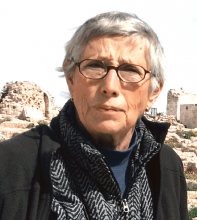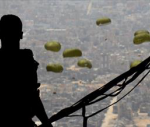You are here
Learning that ‘regime change is risky’
Aug 10,2016 - Last updated at Aug 10,2016
The Syrian army and allied forces recoiled from a concerted attack mounted last weekend southwest of Aleppo by the Jaish Al Fatah coalition of takfiris controlling Idlib province to the west of the city. They attacked through the southwestern Ramousa area containing an artillery base, arsenal and the military academy.
Ironically, it was at this very academy that supporters of the Syrian Muslim Brotherhood massacred dozens of mainly Alawite cadets on June 16, 1979.
The event marked the launch of the Brotherhood’s urban campaign that led to the brutal denouement in Hama in February 1982 when the Brotherhood was crushed.
Therefore, for Damascus, the latest attack on the military academy has great significance.
The overstretched and undermanned Syrian army and its allies insist that they will retake lost territory, while Syrian and Russian war planes have intensified bombing of insurgents and takfiris in eastern Aleppo.
The takfiris broke through to Aleppo’s insurgent-controlled eastern quarters, besieged and blockaded since early July, where 230-300,000 people live. They also managed to partially blockade government-held west Aleppo and its population of 1.2 million, but managed to deliver a few pick-up trucks of food to east Aleppo along a dangerous corridor.
Civilians have not been able to escape.
The Syrian army has been able to deliver some fresh food and fuel to west Aleppo along the Castello corridor, which had been the route used by insurgents to move food, fuel, reinforcements and arms until the road was cut by the army in early July. But the army has not been able to transfer the volume of supplies needed to provide for more than a million civilians.
In addition to Jaish Al Fatah (Army of Conquest) dominated by Al Qaeda-offshoot Jabhat Al Nusra (Support Front), rebranded as Jabhat Fatah Al Sham (Front for the Conquest of Greater Syria) and Ahrar Al Sham (Freemen of Greater Syria), the attacking forces included takfiri elements from Homs, Hama, Aleppo and Damascus provinces.
Among the participants were elements from Jaish Al Islam (Army of Islam) sponsored by Saudi Arabia and based east of Damascus.
Unification of takfiri factions has long been a dream of the leaders of the Jabhat and Ahrar Al Sham, the two largest insurgent factions after Daesh, which has been recently diminished by assaults on multiple fronts.
Unification did not take place until the end of July when Nusra announced its decision to cut ties with Al Qaeda central based on the Pakistan-Afghanistan frontier.
This move was approved by Al Qaeda chief Ayman Al Zawahiri with the aim of removing the “terrorist” stigma associated with Al Qaeda.
However, before the break was announced, Al Qaeda dispatched to Syria some of its senior officers and ideologues to ensure that the tie remained strong.
By making a declaratory, formal, break with Al Qaeda central, Nusra’s primary motive was to rebrand itself as a Syrian domestic and Syrian-rooted movement although it had been originally deployed by Al Qaeda in Iraq, also the parent organisation of Nusra’s rival Daesh.
By convincing, fellow takfiris of its Syrian bona fides, Nusra sought to forge just the sort of alliance that swept into eastern Aleppo.
Without unity this was not an option.
The campaign for this city is the most high profile battle in the Syrian theatre at present and could be a defining campaign in the five-and-a-half-year war for Syria.
Neither side is, however, likely to win. and the result will be continuing stalemate.
Nusra’s move failed to impress Washington and other Western capitals that continue to regard Nusra/Jabhat as a “terrorist group”.
US President Barack Obama somewhat clumsily laid down Western policy when he stated that Washington will “continue intense fire efforts against Al Qaeda in Syria, which, no matter what name it calls itself, cannot be allowed to maintain a safe haven to train and plot attacks against us”.
His comment appeared to align the US with Russia, which has long insisted that Nusra is as much a “terrorist” group as Daesh.
Obama’s statement would also seem to indicate that takfiris associating with Nusra/Jabhat could be targets of both Russian and US aircraft flying missions over Syria.
So far, the US has not struck Nusra/Jabat and its allies, but Russia has not hesitated to do so.
While Nusra/Jabhat has succeeded, finally, in securing some unity among diverse and competing takfiri factions, this unity is unlikely to last.
Virtually all insurgent groupings, including Nusra/Jabhat, are tied to personalities and location based.
While some are committed takfiris, others are salafists with different objectives, still others are opportunists latching onto the takfiri brand to secure funding from non-Syrian individual and government donors still determined to bring down the Damascus government.
Once the hype generated by the Aleppo breakthrough wanes, or the takfiris face heavy bombardment and reverses on the ground, unity is likely to falter. Each group could go its own way.
Unity has eluded them until recently and is certain to do so in the medium to long run.
Each group has its own agenda, its own leadership, which seeks to be in charge, and its own constituency.
None is capable of taking over from Damascus and governing the country.
The defeat of the Syrian army would be followed by the fracturing of the country into takfiri fiefdoms ruled by local warlords. They would take no notice of the expatriate opposition Syrian National Coalition, which seeks to take power but remains a deeply divided and dysfunctional collection of individuals.
The US, in particular, should have learned the lesson that regime change is risky from its abject failures in Afghanistan and Iraq.
Nevertheless, Washington continues to promote regime change in Syria and to train and equip small insurgent forces to achieve this end.
The latest effort, the New Syrian Army, has been attacked twice by Daesh at its base on the Syrian-Iraqi border.













